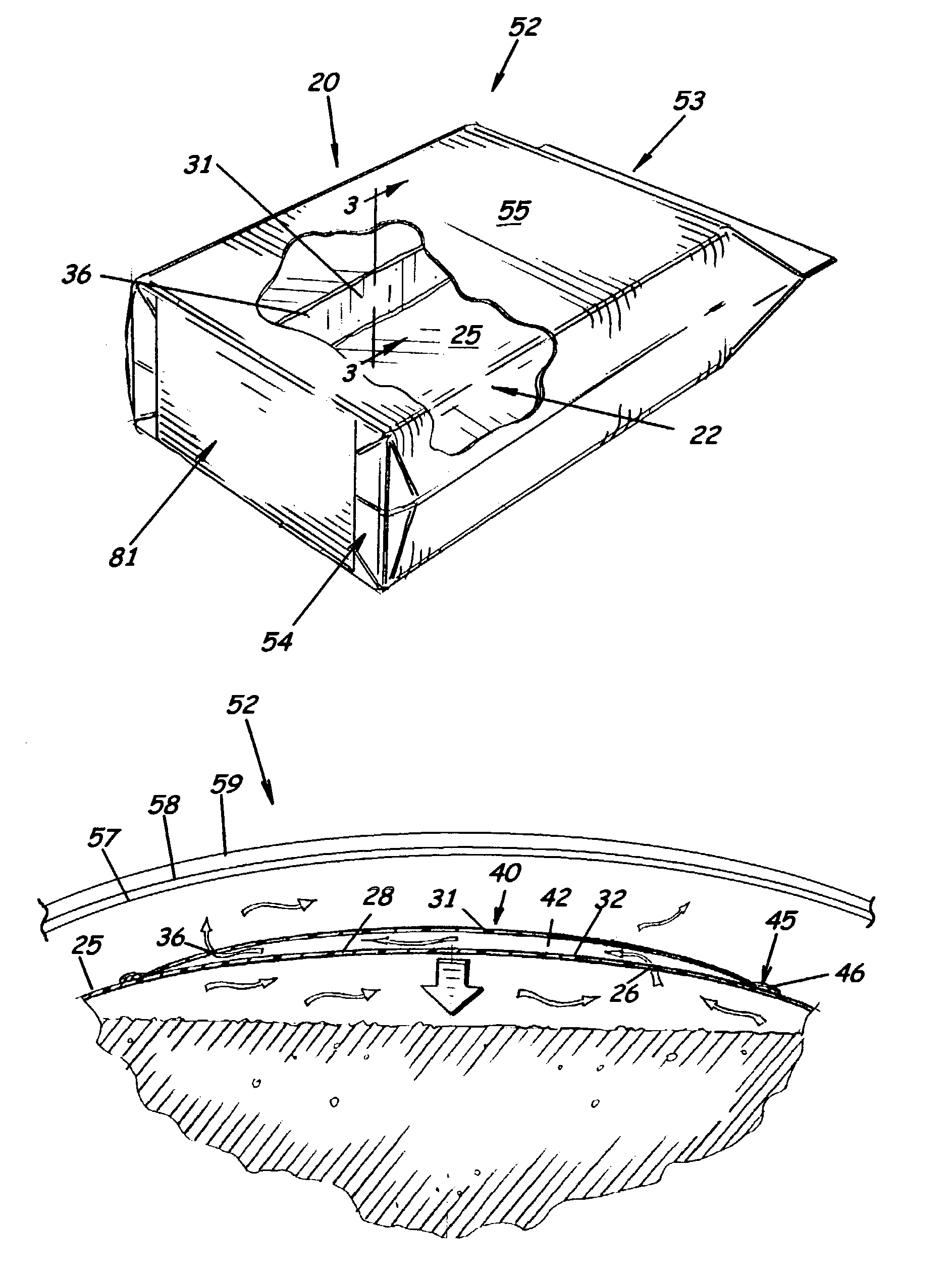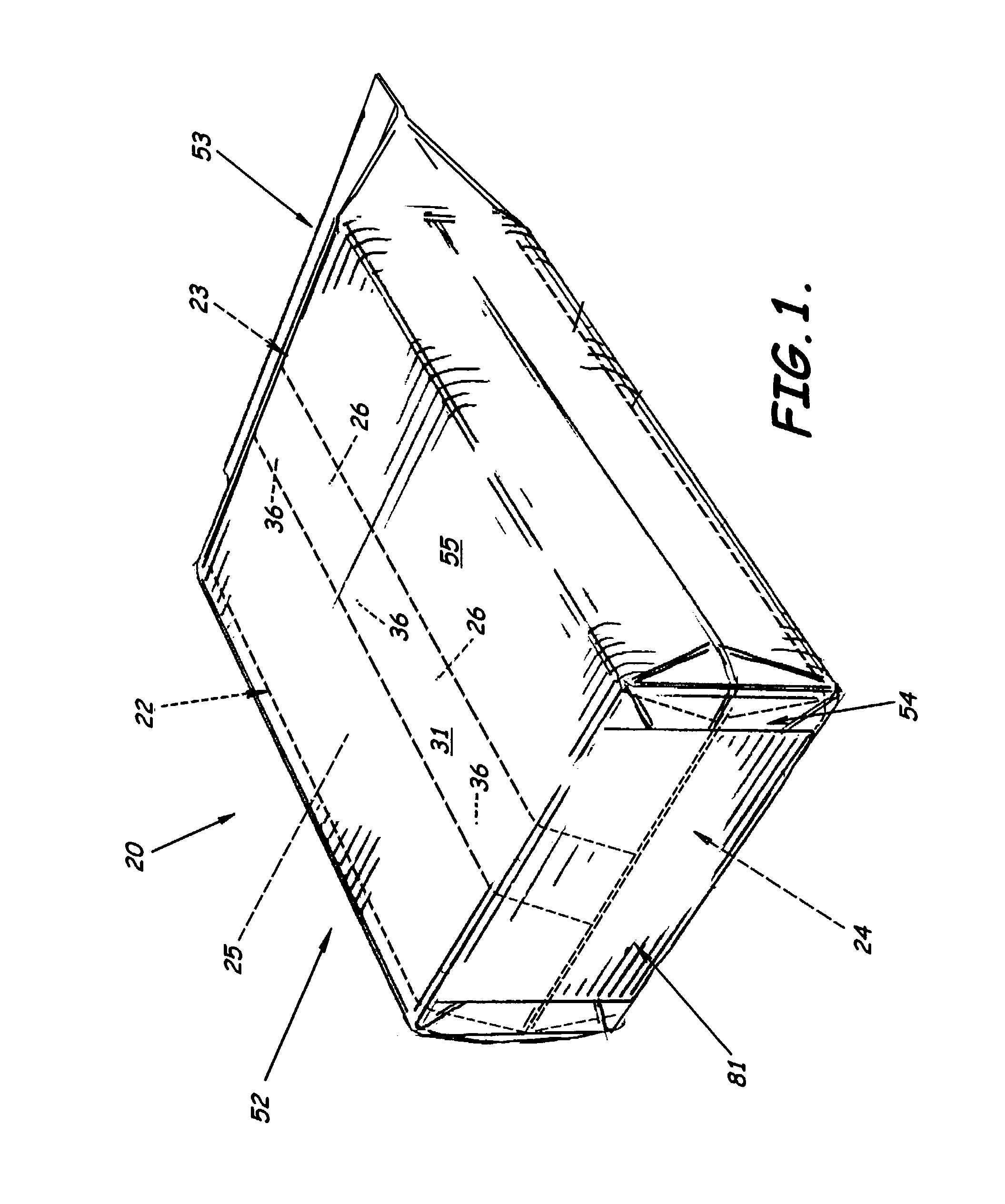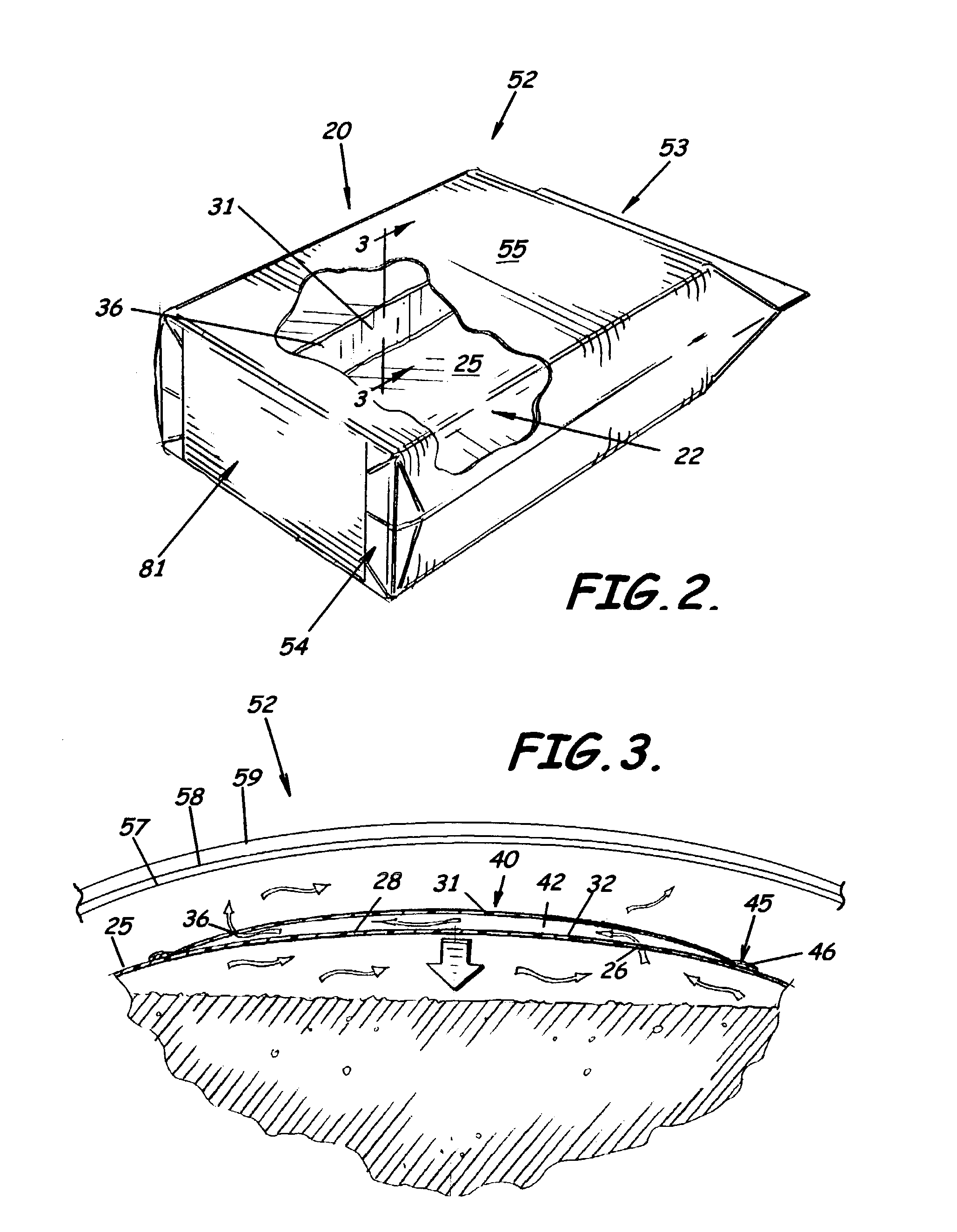Multiwall vented bag, vented bag forming apparatus, and associated methods
a technology of vented bags and vented ends, applied in the field of multi-wall packaging and methods for forming multi-wall packaging, can solve the problems of unvented bags bursting during stacking process, bag handling and stacking difficulty, and significant difficulty
- Summary
- Abstract
- Description
- Claims
- Application Information
AI Technical Summary
Benefits of technology
Problems solved by technology
Method used
Image
Examples
Embodiment Construction
[0040]The present invention will now be described more fully hereinafter with reference to the accompanying drawings, which illustrate embodiments of the invention. This invention may, however, be embodied in many different forms and should not be construed as limited to the illustrate embodiments set forth herein. Rather, these embodiments are provided so that this disclosure will be thorough and complete, and will fully convey the scope of the invention to those skilled in the art. Like numbers refer to like elements throughout. Prime notation, if used, indicates similar elements in alternative embodiments.
[0041]As illustrated in FIGS. 1–17, embodiments of the present invention advantageously provide a multiwall bag 20, e.g., a plurality of overlying layers or plies of material. The bag includes an inner tube 22 formed of a plastic material, e.g., such as supplied from a roll of plastic tube material 27 (see FIGS. 1–2 and 6). In a preferred embodiment of the bag 20, the plastic ma...
PUM
 Login to View More
Login to View More Abstract
Description
Claims
Application Information
 Login to View More
Login to View More - R&D
- Intellectual Property
- Life Sciences
- Materials
- Tech Scout
- Unparalleled Data Quality
- Higher Quality Content
- 60% Fewer Hallucinations
Browse by: Latest US Patents, China's latest patents, Technical Efficacy Thesaurus, Application Domain, Technology Topic, Popular Technical Reports.
© 2025 PatSnap. All rights reserved.Legal|Privacy policy|Modern Slavery Act Transparency Statement|Sitemap|About US| Contact US: help@patsnap.com



